In the world of prosthetics, a groundbreaking advancement is changing the game for individuals with lower-limb amputations. Researchers at MIT, in collaboration with Brigham and Women’s Hospital, have developed a neuroprosthetic system that allows users to control their prosthetic legs using their own nervous systems. This innovative approach could bring us closer to a future of fully integrated, naturally controlled artificial limbs.
GET SECURITY ALERTS, EXPERT TIPS – SIGN UP FOR KURT’S NEWSLETTER – THE CYBERGUY REPORT HERE

Credit: Hugh Herr and Hyungeun Song
The AMI: A surgical game-changer
At the heart of this breakthrough is a surgical procedure known as the agonist-antagonist myoneural interface, or AMI. Unlike traditional amputation methods, the AMI reconnects muscles in the residual limb, preserving the natural push-pull dynamics of muscle pairs. This seemingly simple change has profound implications for prosthetic control and function.
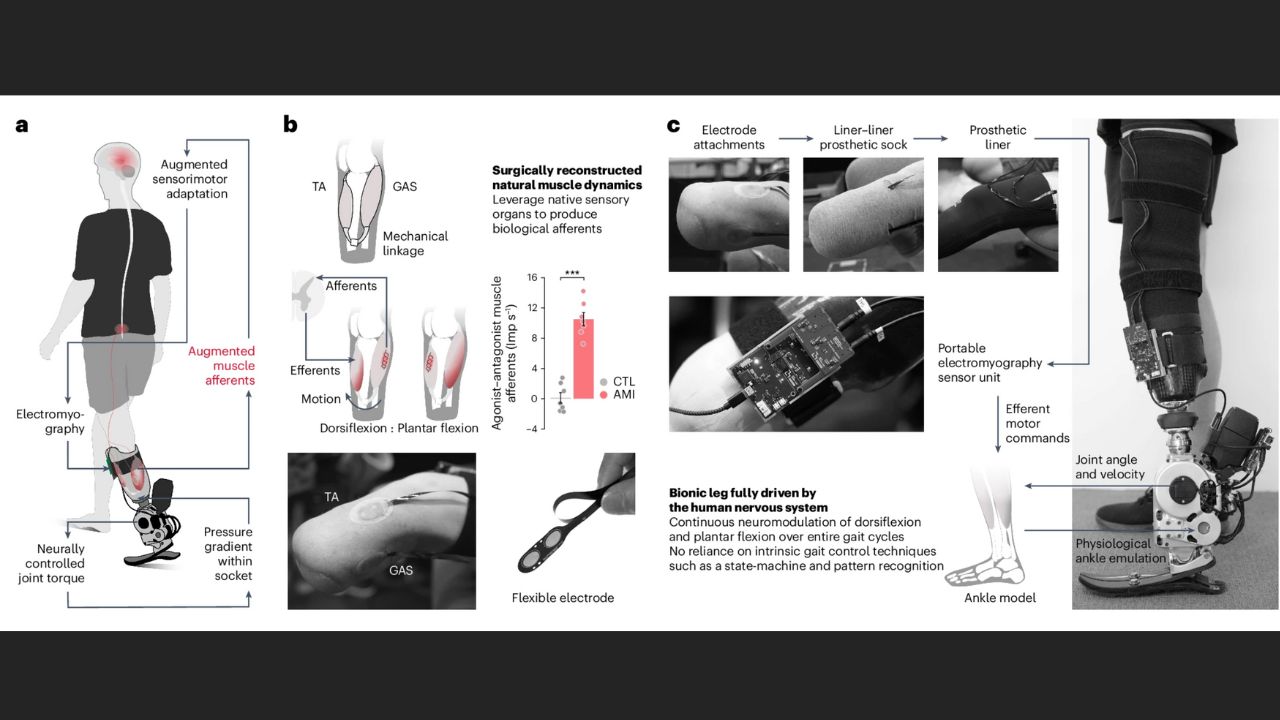
Credit: MIT Media Lab
Dr. Hugh Herr, a professor at MIT and senior author of the study, explains the significance: “This is the first prosthetic study in history that shows a leg prosthesis under full neural modulation, where a biomimetic gait emerges. No one has been able to show this level of brain control that produces a natural gait, where the human’s nervous system is controlling the movement, not a robotic control algorithm.”
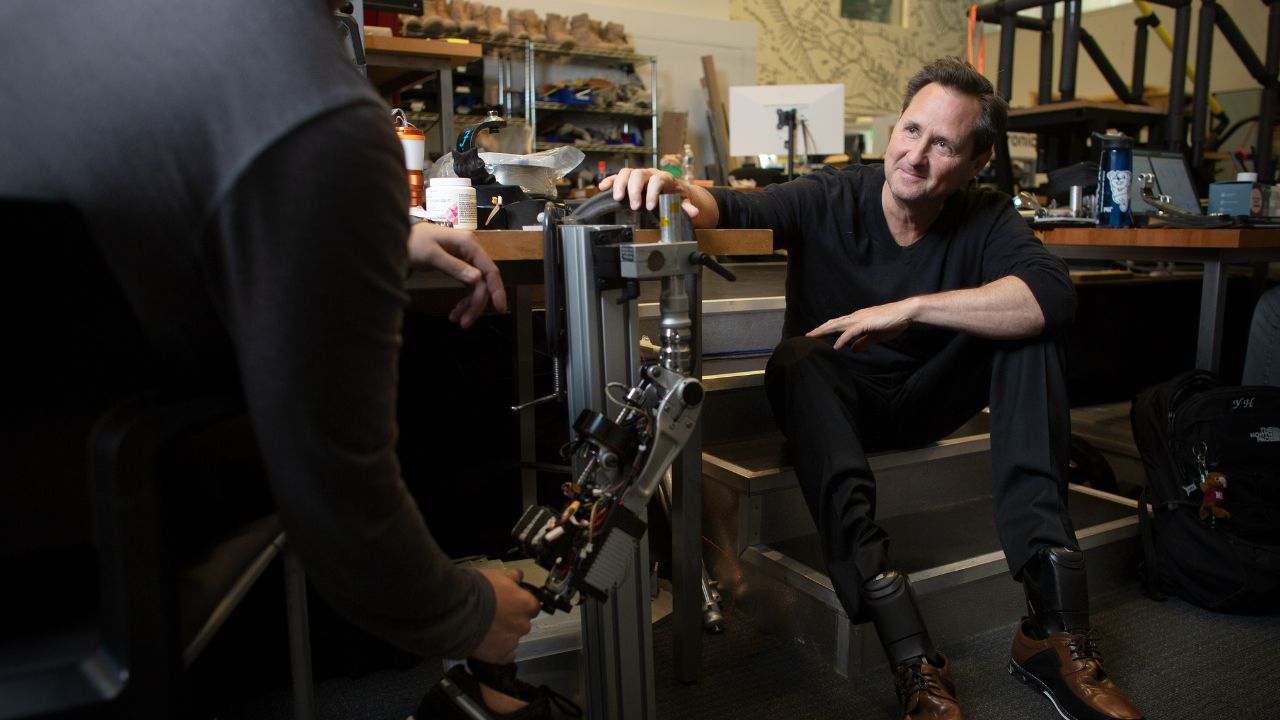
Credit: Jimmy Day, MIT Media Lab
AI-DRIVEN EXOSKELETON LIGHTENS YOUR LOAD AND ELEVATES PERFORMANCES
The power of proprioception
The key advantage of the AMI system is its ability to provide users with proprioceptive feedback – the sense of where their limb is in space. This sensory information, often taken for granted by those with intact limbs, is crucial for natural movement and control. With the AMI, patients regain a portion of this vital feedback, allowing them to walk more naturally and confidently.
In the study, seven patients with AMI surgery were compared to seven with traditional amputations. The results were striking. AMI patients walked faster, navigated obstacles more easily, and climbed stairs with greater agility. They also demonstrated more natural movements, such as pointing their toes upward when stepping over obstacles—a subtle but important aspect of a natural gait.
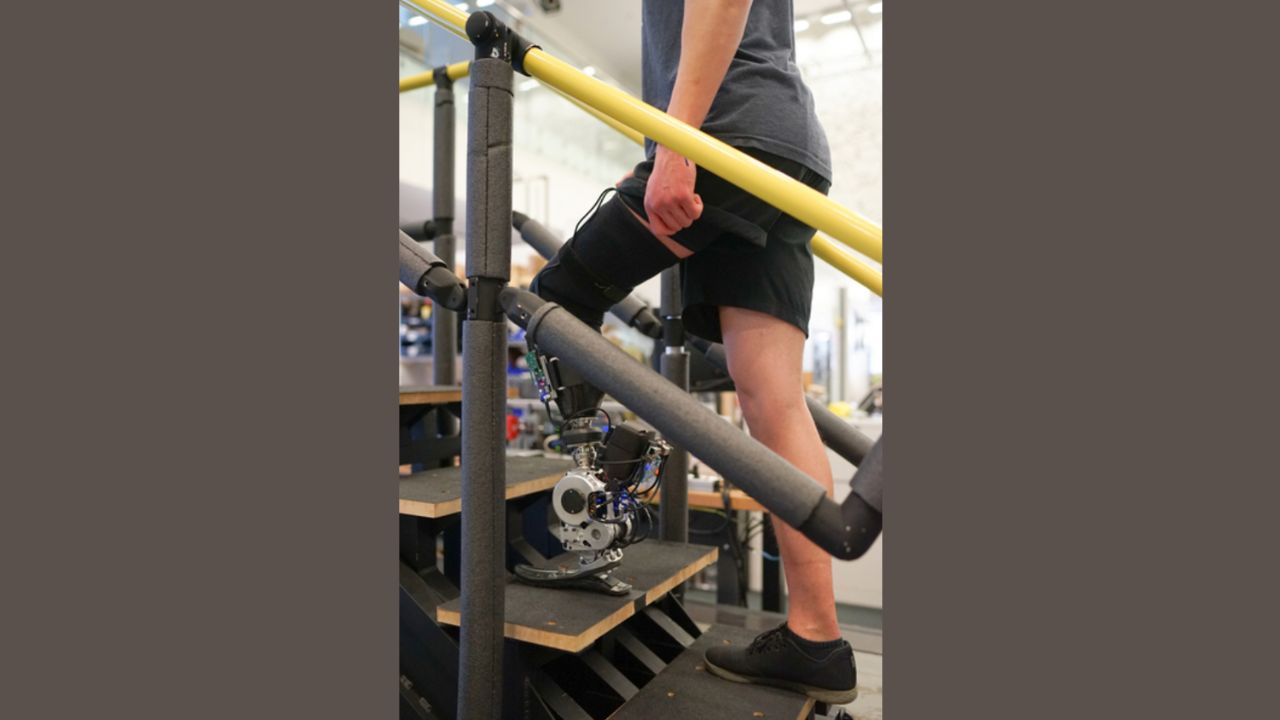
Credit: Hugh Herr and Hyungeun Song
WEARABLE EXOSKELETON CAN TURN YOU INTO A SUPERHUMAN ATHLETE
Adapting to real-world challenges
One of the most impressive aspects of the AMI system is its versatility. Patients were able to adapt their gait to various real-world conditions, including walking on slopes and navigating stairs. This adaptability is crucial for everyday life, where terrain and challenges can change rapidly.
The system’s responsiveness was put to the test in an obstacle-crossing trial. AMI patients were able to modify their gait to clear obstacles more effectively than those with traditional prosthetics. This ability to rapidly adjust to unexpected challenges is a hallmark of natural limb function and represents a significant leap forward in prosthetic technology.
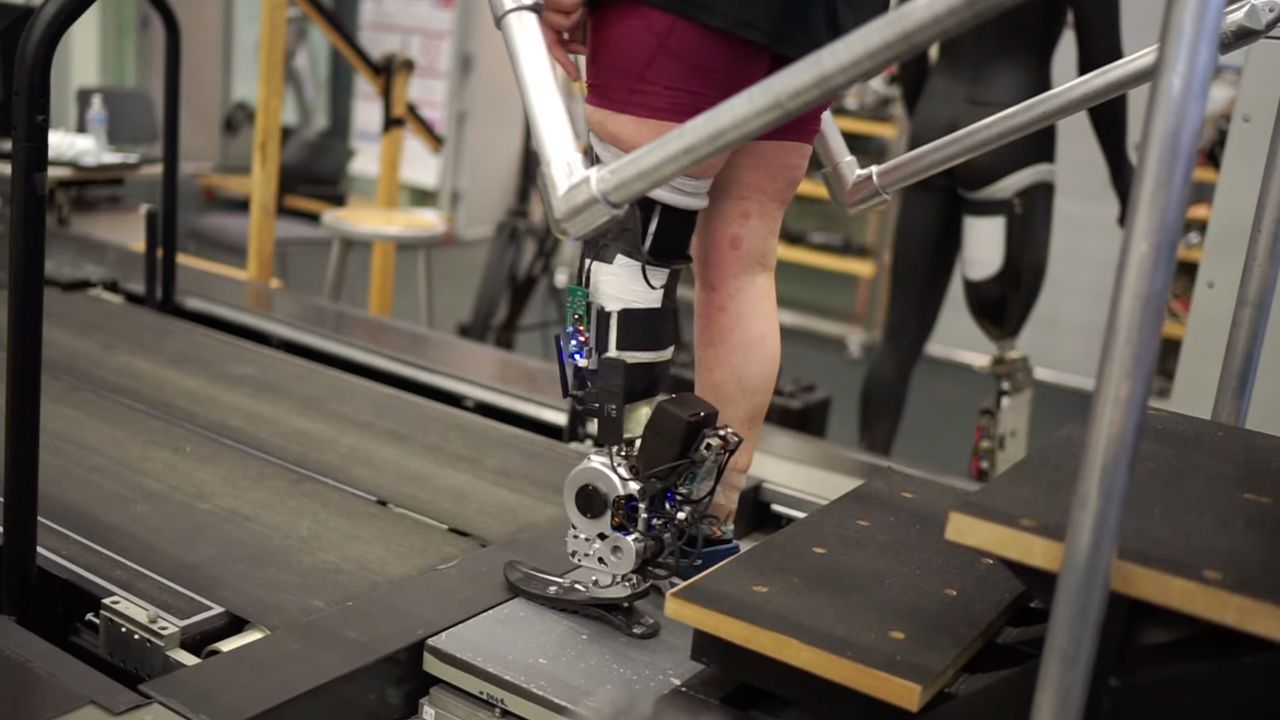
Credit: Hugh Herr and Hyungeun Song
AI WEARABLE CONTRAPTION GIVES YOU SUPERHUMAN STRENGTH
The science of sensory feedback
The success of the AMI system hinges on its ability to augment residual muscle afferents – the sensory signals sent from muscles to the nervous system. Remarkably, even a modest increase in these signals allows for significantly improved control and function. This finding highlights the incredible adaptability of the human nervous system and its ability to integrate and utilize even partial sensory information.
Dr. Hyungeun Song, lead author of the study, notes: “One of the main findings here is that a small increase in neural feedback from your amputated limb can restore significant bionic neural controllability, to a point where you allow people to directly neurally control the speed of walking, adapt to different terrain, and avoid obstacles.”
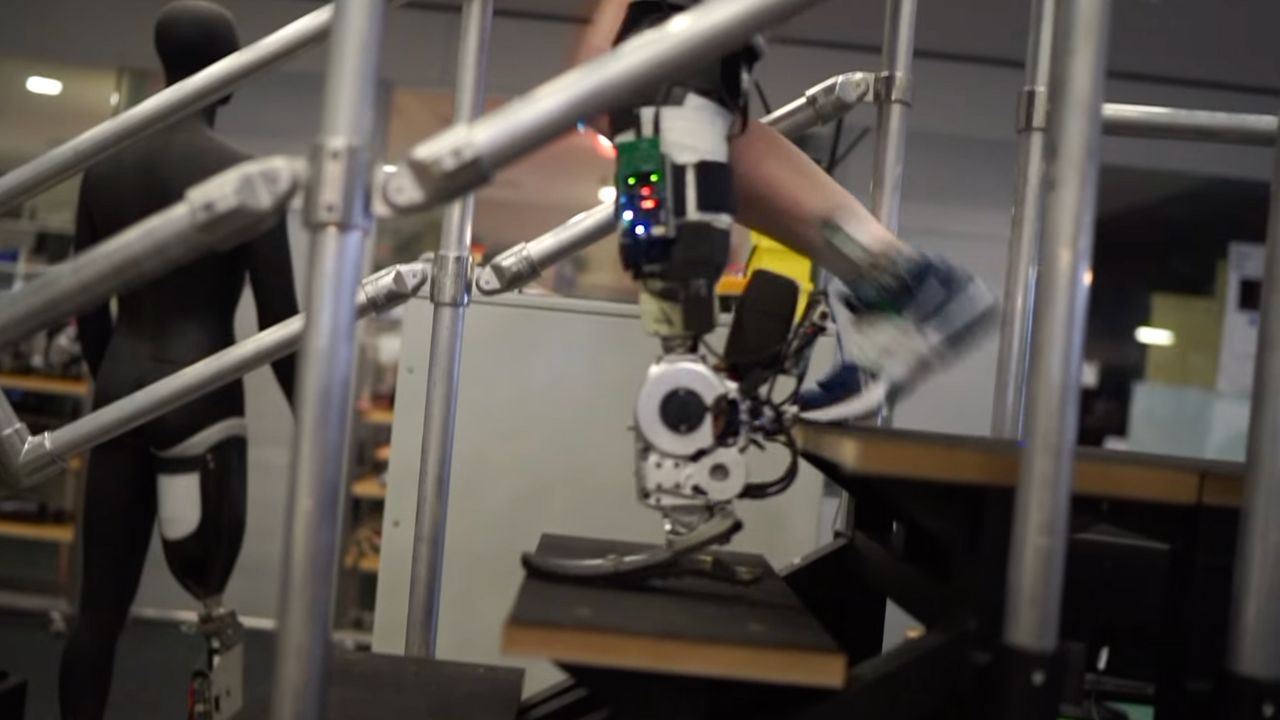
Credit: Hugh Herr and Hyungeun Song
Looking to the future
While this research represents a significant step forward, it’s just the beginning. The team at MIT is exploring ways to further enhance sensory feedback and improve the integration between the human nervous system and prosthetic devices. The AMI procedure has already been performed on about 60 patients worldwide, including those with arm amputations, suggesting broad applicability across different types of limb loss.
As this technology continues to evolve, we may see even more natural and intuitive control of artificial limbs. The ultimate goal is to create prosthetics that feel and function like a natural part of the user’s body, blurring the line between human and machine.

Credit: Hugh Herr and Hyungeun Song
Kurt’s key takeaways
The development of prosthetic limbs controlled by the nervous system marks the beginning of a new era in bionics. It offers hope for improved mobility, independence, and quality of life for millions of people living with limb loss. Moreover, it provides valuable insights into the plasticity of the human nervous system and our ability to integrate with advanced technology.
As we continue to push the boundaries of what’s possible in merging biology and technology, we open up new frontiers in human augmentation and rehabilitation. The implications extend far beyond prosthetics, potentially influencing fields such as neurology, robotics, and even our understanding of human consciousness and embodiment.
How comfortable would you be with technology that directly interfaces with your nervous system? Let us know in the comments below.
FOR MORE OF MY SECURITY ALERTS, SUBSCRIBE TO MY FREE CYBERGUY REPORT NEWSLETTER HERE



3 comments
As a two year amputee from a traumatic injury I would love this. It has been a problem getting a prosthetic leg that works well or feels right and at two years I have developed neuromas that inhibit me from wearing a traditional prosthetic until they are removed. Having this with the nerves integrated would mostly eliminate the building of neuroma’s. I’m all for it. Plus I’d love to be able to go back to my love, ICU Nursing.
After the albeit minor drama related to severely breaking my left Humerus a few years ago, not to mention the few years of working with people who had various different types of disabilities.
in some senses I know that this would be a God send for the few and no doubt many,
AFTER A STROKE MAKING MY RIGHT SIDE USELESS I WOULD LOVE THIS AND WOULD GLADLY BE YOUR GUINEA HUMAN.